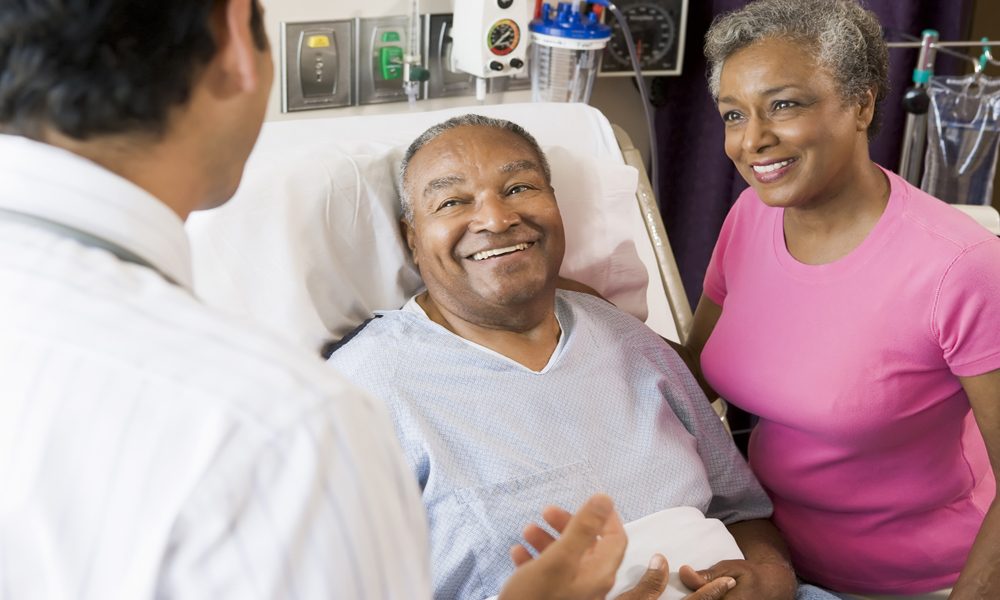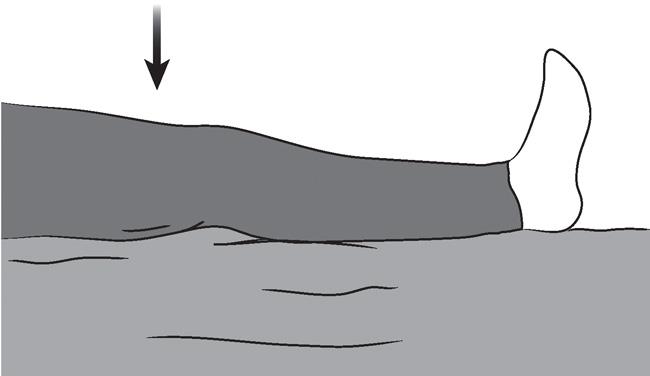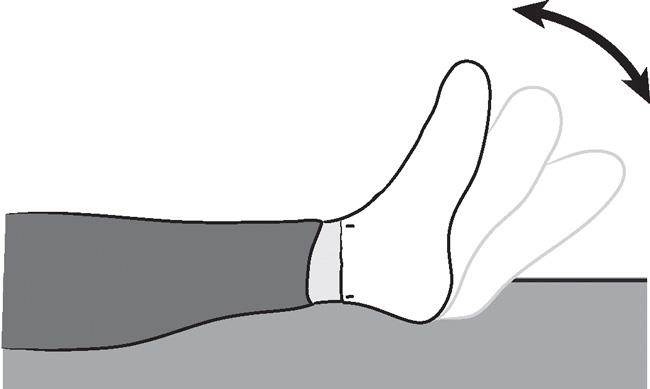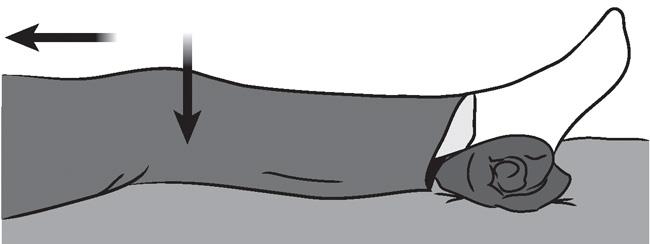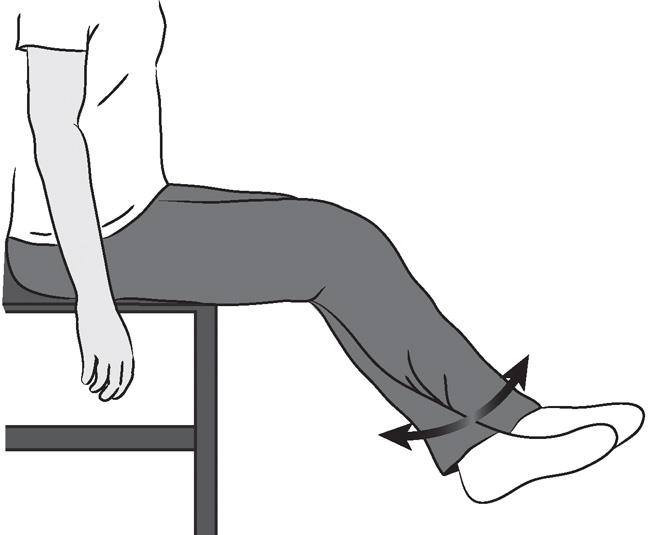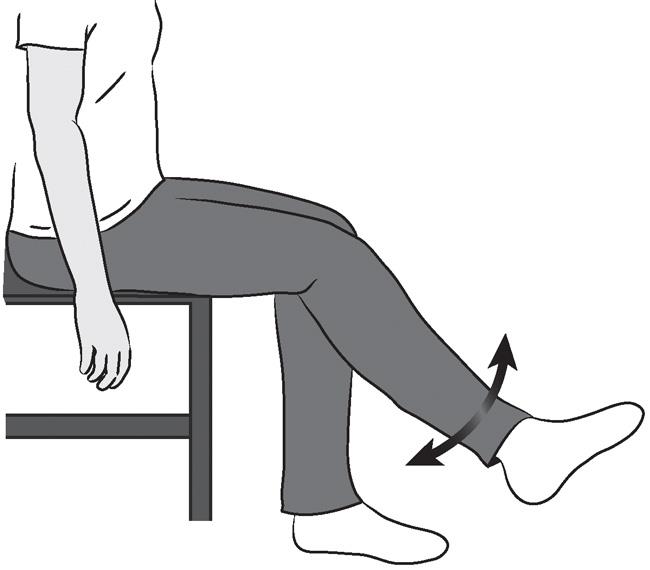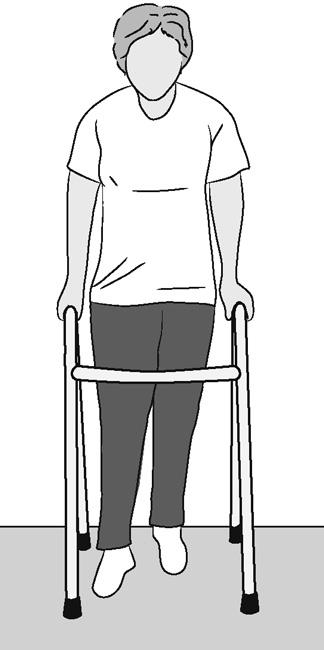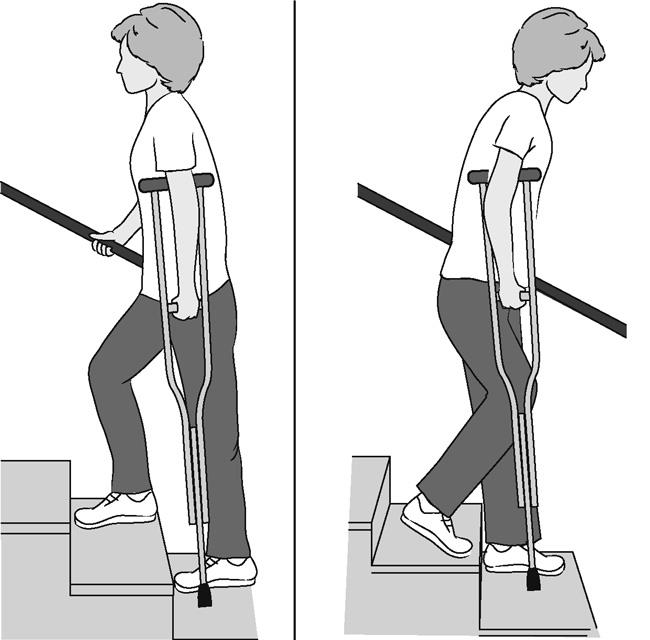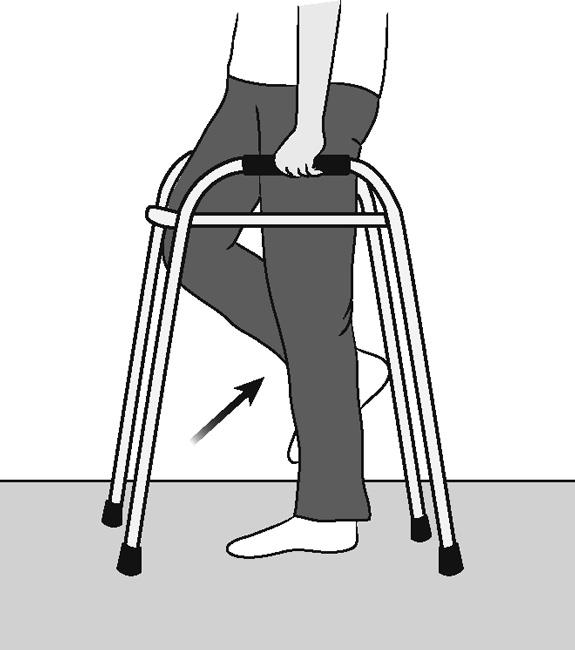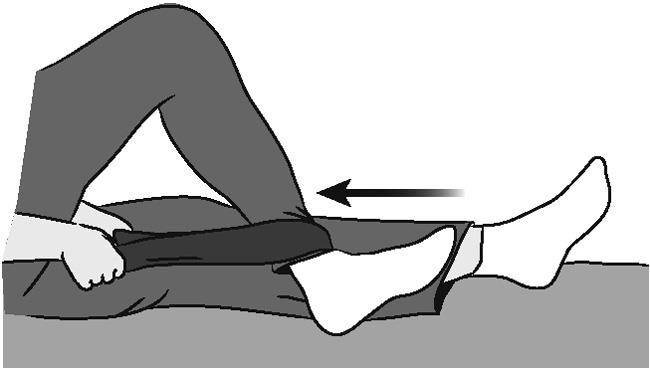Recovery
Total Knee Replacement Exercise Guide
Regular exercise to restore strength and mobility to your knee and a gradual return to everyday activities are important for your full recovery after total knee replacement. Your orthopaedic surgeon and physical therapist may recommend that you exercise for 20 to 30 minutes daily, or even 2 to 3 times daily; and walk for 30 minutes, 2 to 3 times daily during your early recovery. They may suggest some of the exercises shown below.
This guide can help you better understand your exercise and activity program, supervised by your physical therapist and orthopaedic surgeon. To ensure your safe recovery, be sure to check with your therapist or surgeon before performing any of the exercises shown.
Early Post-operative Exercises
The following exercises will help increase circulation to your legs and feet, which is important for preventing blood clots. They will also help strengthen your muscles and improve knee movement.
Start the exercises as soon as you are able. You can begin them in the recovery room shortly after surgery. You may feel uncomfortable at first, but these exercises will help speed your recovery and actually diminish your post-operative pain.
Quadriceps Sets
- Tighten your thigh muscle.
- Try to straighten your knee. Hold for 5 to 10 seconds.
- Repeat this exercise approximately 10 times during a 2-minute period, rest one minute, and then repeat.
- Continue until your thigh feels fatigued.
Straight Leg Raises
- Tighten your thigh muscle with your knee fully straightened on the bed, as with the quadriceps set above.
- Lift your leg several inches. Hold for 5 to 10 seconds.
- Slowly lower.
- Repeat until your thigh feels fatigued.
- This exercise should take 3 minutes.
You also can do leg raises while sitting.
- Tighten your thigh muscle and hold your knee fully straightened with your leg unsupported.
- Repeat as above.
Continue these exercises periodically until full strength returns to your thigh.
Ankle Pumps
- Move your foot up and down rhythmically by contracting your calf and shin muscles.
- Perform this exercise for 2 to 3 minutes, 2 to 3 times an hour in the recovery room.
- If you are watching TV, do this exercise during every commercial break.
Continue this exercise until you are fully recovered and all ankle and lower-leg swelling has subsided.
Knee Straightening Exercises
- Place a small rolled towel just above your heel so that your heel is not touching the bed.
- Tighten your thigh.
- Try to fully straighten your knee and to touch the back of your knee to the bed. Hold fully straightened for 5 to 10 seconds.
- Repeat until your thigh feels fatigued.
- This exercise should take 3 minutes.
Bed-Supported Knee Bends
- Slide your foot toward your buttocks, bending your knee and keeping your heel on the bed. Hold your knee in a maximally bent position for 5 to 10 seconds.
- Straighten your leg.
- Repeat several times until your leg feels fatigued or until you can completely bend your knee.
- This exercise should take 2 minutes.
Sitting Supported Knee Bends
- While sitting at your bedside or in a chair with your thigh supported, place your foot behind the heel of your operated knee for support.
- Slowly bend your knee as far as you can. Hold your knee in this position for 5 to 10 seconds.
- Repeat several times until your leg feels fatigued or until you can completely bend your knee.
- This exercise should take 2 minutes.
Sitting Unsupported Knee Bends
- While sitting at bedside or in a chair with your thigh supported, bend your knee as far as you can until your foot rests on the floor.
- With your foot lightly resting on the floor, slide your upper body forward in the chair to increase your knee bend. Hold for 5 to 10 seconds.
- Straighten your knee fully.
- Repeat several times until your leg feels fatigued or until you can completely bend your knee.
- This exercise should take 3 minutes.
Early Activity
Soon after your surgery, you will begin to walk short distances in your hospital room and perform everyday activities. This early activity aids your recovery and helps your knee regain its strength and movement.
Walking
Proper walking is the best way to help your knee recover. At first, you will walk with a walker or crutches. Your surgeon or therapist will tell you how much weight to put on your leg.
- Stand comfortably and erect with your weight evenly balanced on your walker or crutches.
- Advance your walker or crutches a short distance; then reach forward with your operated leg with your knee straightened so the heel of your foot touches the floor first.
- As you move forward, your knee and ankle will bend and your entire foot will rest evenly on the floor.
- As you complete the step, your toe will lift off the floor and your knee and hip will bend so that you can reach forward for your next step. Remember, touch your heel first, then flatten your foot, then lift your toes off the floor.
- Walk as rhythmically and smoothly as you can. Don't hurry. Adjust the length of your step and speed as necessary to walk with an even pattern.
- As your muscle strength and endurance improve, you may spend more time walking, and you will gradually put more weight on your leg. When you can walk and stand for more than 10 minutes and your knee is strong enough so that you are not carrying any weight on your walker or crutches (often about 2 to 3 weeks after your surgery), you can begin using a single crutch or cane. Hold the aid in the hand opposite the side of your surgery. You should not limp or lean away from your operated knee.
Stair Climbing and Descending
Stair climbing is an excellent strengthening and endurance activity that also requires flexibility.
- At first, you will need a handrail for support and will be able to go only one step at a time.
- Always lead up the stairs with your good knee and down the stairs with your operated knee. Remember, "up with the good" and "down with the bad."
- You may want to have someone help you negotiate stairs until you have regained most of your strength and mobility.
- Do not try to climb steps higher than the standard height (7 inches) and always use a handrail for balance.
- As you become stronger and more mobile, you can begin to climb stairs foot over foot.
Advanced Exercises and Activities
Once you have regained independence for short distances and a few steps, you may increase your activity. The pain of your knee problems before surgery and the pain and swelling after surgery have weakened your knee. A full recovery will take several months. The following exercises and activities will help you recover fully.
Standing Knee Bends
|
Assisted Knee Bends
|
Knee Exercises with Resistance
You can place light weights around your ankle and repeat any of the above exercises. These resistance exercises usually can begin 4 to 6 weeks after your surgery. Use 1- to 2-pound weights at first; gradually increase the weight as your strength returns. (Inexpensive wrap-around ankle weights with Velcro straps can be purchased at most sporting goods stores.)
Exercycling
Riding an exercise bike is an excellent activity to help you regain muscle strength and knee mobility.
- At first, adjust the seat height so that the bottom of your foot just touches the pedal with your knee almost straight.
- Peddle backwards at first.
- Ride forward only after a comfortable cycling motion is possible backwards.
- As you become stronger (at about 4 to 6 weeks) slowly increase the tension on the exercycle. Exercycle for 10 to 15 minutes, 2 times a day, and gradually build up to 20 to 30 minutes, 3 to 4 times a week.
Pain or Swelling after Exercise
You may experience knee pain or swelling after exercise or activity. You can relieve this by elevating your leg and applying ice wrapped in a towel. If you use ice, it should be placed on the knee for 20 minutes and then removed for 20 minutes; this sequence should be repeated for about 2 hours.
Exercise and activity should consistently improve your strength and mobility. If you have any questions or problems, contact your orthopaedic surgeon or physical therapist.
Contributed and/or Updated by
Peer-Reviewed by
AAOS does not endorse any treatments, procedures, products, or physicians referenced herein. This information is provided as an educational service and is not intended to serve as medical advice. Anyone seeking specific orthopaedic advice or assistance should consult his or her orthopaedic surgeon, or locate one in your area through the AAOS Find an Orthopaedist program on this website.







